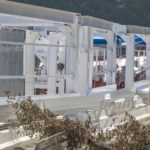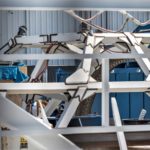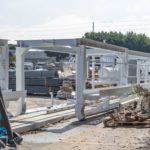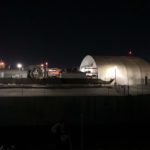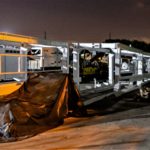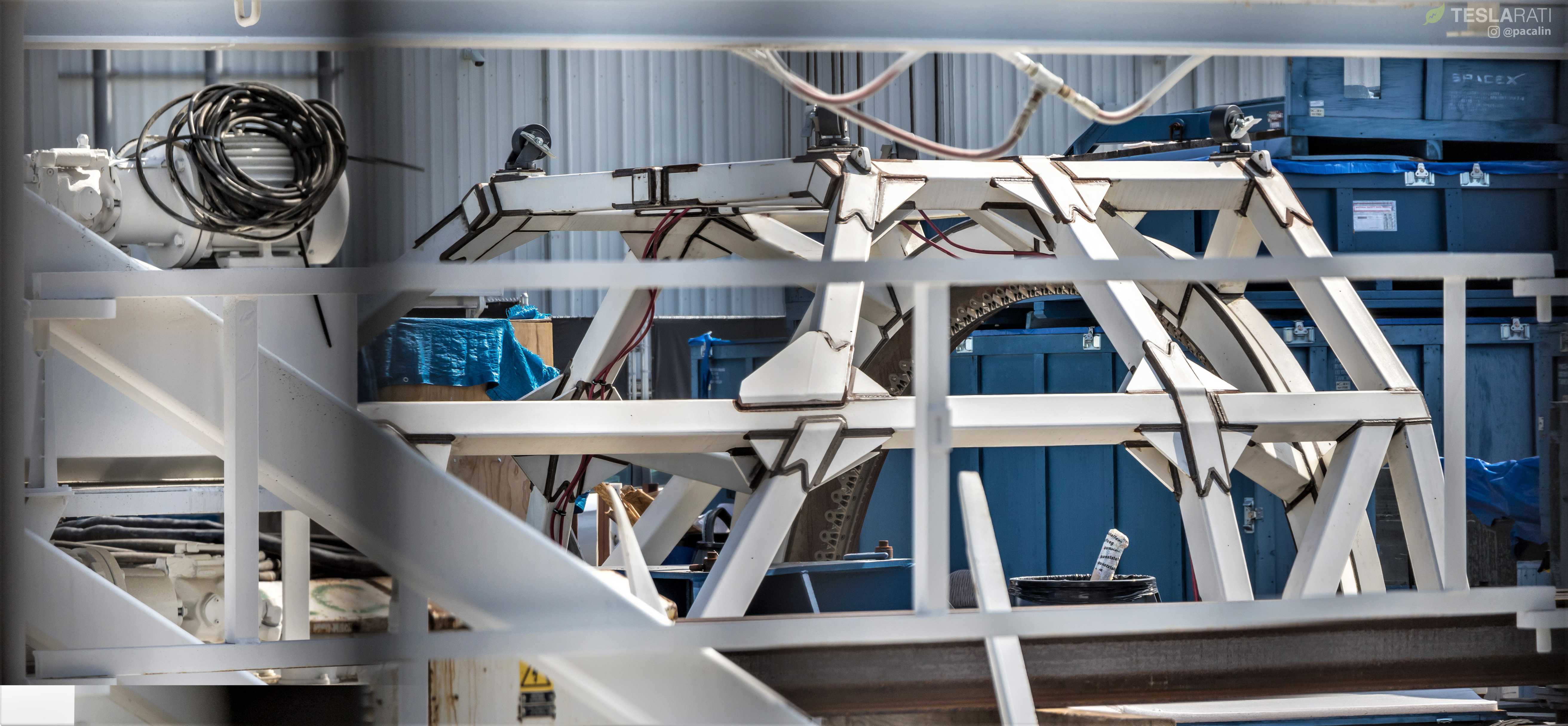

News
The Boring Company’s gantry and next-gen TBM takes shape ahead of Chicago project
While The Boring Company is hard at work preparing for the upcoming public showing of its proof-of-concept tunnel in Hawthorne, CA on December 10, the tunneling startup also appears to be laying the foundations for its high-profile transport project in Chicago. The project, which would connect downtown Chicago to O’Hare airport, is expected to break ground within the next few months.
The contract for the Chicago-O’Hare transport line had several key bidders, including veteran conglomerates with decades of experience in building transportation systems. Quite surprisingly, Chicago awarded the contract for the project to the young tunneling startup, partly due to The Boring Company’s commitment to funding the tunnel system through private investors. In true Elon Musk fashion, the timeline for the Chicago tunnels is aggressive, with the startup aiming to have the high-speed systems operational in 18-24 months after the initial digging.
The Boring Company has issued few updates on the Chicago project since it won the contract last June. Save for an image of a tunnel boring machine gantry that was shared on Twitter; the tunneling startup has been quite silent about the progress of its preparations for the high-profile project. Earlier this month, though, Teslarati photographers Pauline Acalin and Tom Cross were able to snap more images of the TBM gantry being built for the Chicago transport line. What’s more, sophisticated equipment in the same site also suggests that a large machine — possibly The Boring Company’s new TBM — is under construction.
- The Boring Company’s site for the assembly of its TBM gantry and its next-generation boring machine. [Credit: Pauline Acalin/Teslarati]
- The Boring Company’s site for the assembly of its TBM gantry and its next-generation boring machine. [Credit: Pauline Acalin/Teslarati]
The Boring Company’s construction site for its gantry and TBM. [Credit: Pauline Acalin/Teslarati]
During the Boring Company’s information session earlier this year, Elon Musk described the design of the startup’s tunnel boring machines. According to Musk, Godot, the company’s first TBM, is a conventional tunneling machine. Line-Storm, which was announced by Musk on Twitter last October, would be a hybrid, with parts from conventional boring machines and custom hardware designed by the company. Thanks to its hybrid nature, Line-Storm would be 2x faster than Godot. Proof-Rock, a third-generation TBM, will be developed entirely by the Boring Company, and it would be 10-15x faster than conventional TBMs.
It remains to be seen if the machine seemingly being assembled at the Hawthorne site is Line-Storm or Proof-Rock. That said, the Boring Company’s TBM for Chicago would most likely feature the startup’s most advanced tunneling tech yet. During the information session, Musk stated that the company’s boring machines, thanks to their electric nature (or partially-partially electric in the case of Line-Storm), the Boring Co’s machines are around 3x more powerful than conventional TBMs. The TBMs will be powered by Tesla batteries as well, eliminating the need for cabling in the actual tunneling site.
- A TBM gantry under construction. [Credit: Pauline Acalin/Teslarati]
- The Boring Company’s construction site for its gantry and TBM. [Credit: Tom Cross/Teslarati]
- The Boring Company’s next-gen tunnel-boring machine seen in its early stages, October 5th. [Credit: Tom Cross/Teslarati]
The Boring Company’s construction site for its gantry and TBM. [Credit: Pauline Acalin and Tom Cross/Teslarati]
The Chicago-O’Hare line is the Boring Company’s most ambitious project to date, estimated to be more than 17 miles long and costing around $1 billion when it’s complete. The transport line would feature the Loop System, which utilizes electric pods designed to transport up to 16 commuters at a time. The pods, which would be constructed by Tesla Inc., are all-electric, and are capable of traveling up to 150 mph. Seemingly as a means to make the manufacturing of the Urban Loop pods quicker and more efficient, Tesla would be using the Model X chassis as a basis for the vehicles.
Apart from the work being done on the Chicago TBM gantry, as well as the apparent assembly of its next tunnel boring machine, The Boring Company is also hard at work in completing its Hawthorne tunnel, which is set for public showing this coming December 10. A prototype garage-elevator concept that connects directly to the Hawthorne test tunnels is also being built on a private lot at 120th Street and Prairie Avenue, roughly halfway in the company’s 2-mile Hawthorne test tunnel.
News
These Tesla, X, and xAI engineers were just poached by OpenAI
The news is the latest in an ongoing feud between Elon Musk and the Sam Altman-run firm OpenAI.
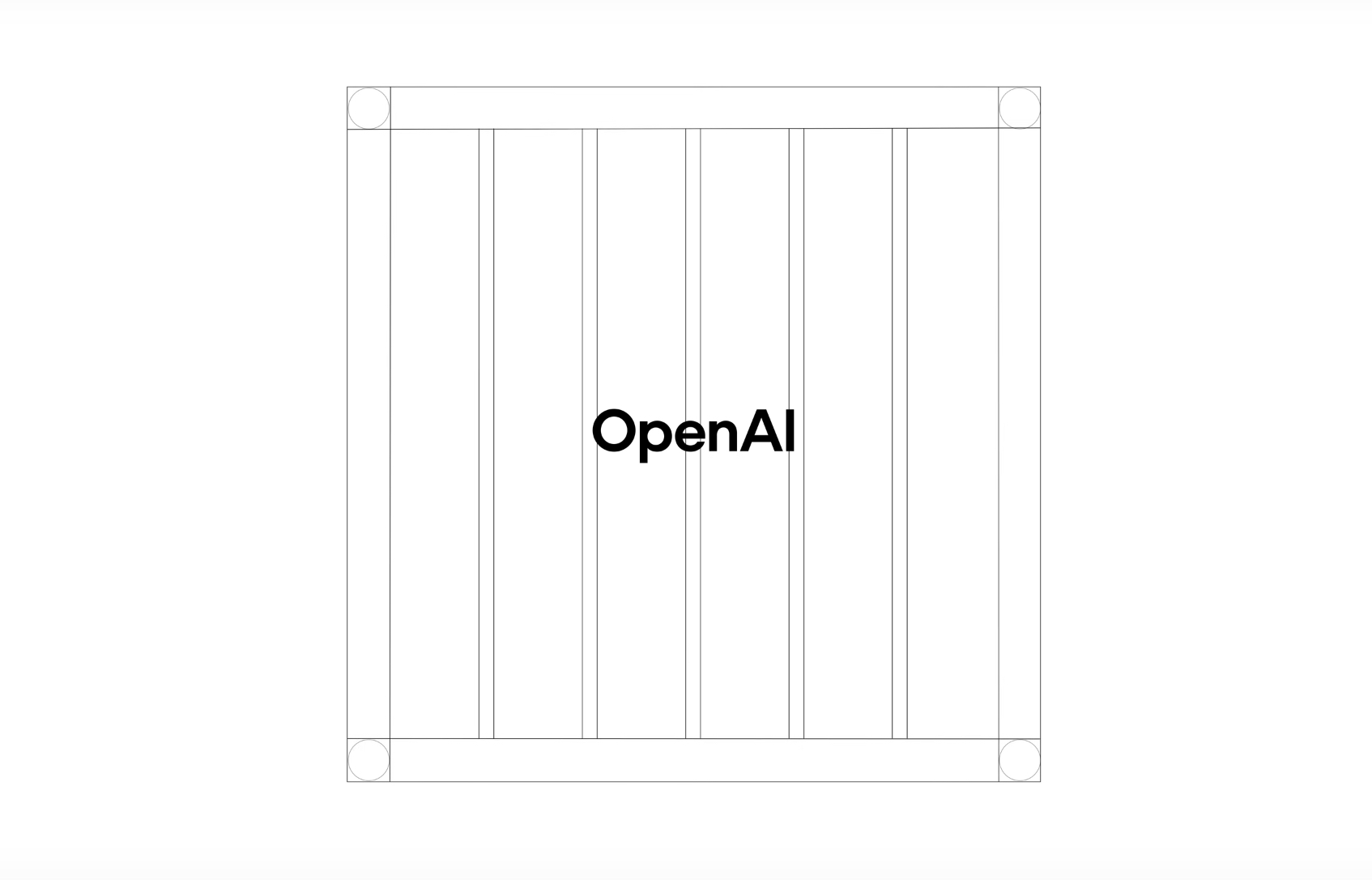
OpenAI, the xAI competitor for which Elon Musk previously served as a boardmember and helped to co-found, has reportedly poached high-level engineers from Tesla, along with others from xAI, X, and still others.
On Tuesday, Wired reported that OpenAI hired four high-level engineers from Tesla, xAI, and X, as seen in an internal Slack message sent by co-founder Greg Brockman. The engineers include Tesla Vice President of Software Engineering David Lau, X and xAI’s head of infrastructure engineering Uday Ruddarraju, and fellow xAI infrastructure engineer Mike Dalton. The hiring spree also included Angela Fan, an AI researcher from Meta.
“We’re excited to welcome these new members to our scaling team,” said Hannah Wong, an OpenAI spokesperson. “Our approach is to continue building and bringing together world-class infrastructure, research, and product teams to accelerate our mission and deliver the benefits of AI to hundreds of millions of people.”
Lau has been in his position as Tesla’s VP of Software Engineering since 2017, after previously working for the company’s firmware, platforms, and system integration divisions.
“It has become incredibly clear to me that accelerating progress towards safe, well-aligned artificial general intelligence is the most rewarding mission I could imagine for the next chapter of my career,” Lau said in a statement to Wired.
🚨Optimistic projections point to xAI possibly attaining profitability by 2027, according to Bloomberg's sources.
If accurate, this would be quite a feat for xAI. OpenAI, its biggest rival, is still looking at 2029 as the year it could become cash flow positive.💰 https://t.co/pE5Z9daez8
— TESLARATI (@Teslarati) June 18, 2025
READ MORE ON OPENAI: Elon Musk’s OpenAI lawsuit clears hurdle as trial looms
At xAI, Ruddarraju and Dalton both played a large role in developing the Colossus supercomputer, which is comprised of over 200,000 GPUs. One of the major ongoing projects at OpenAI is the company’s Stargate program,
“Infrastructure is where research meets reality, and OpenAI has already demonstrated this successfully,” Ruddarraju told Wired in another statement. “Stargate, in particular, is an infrastructure moonshot that perfectly matches the ambitious, systems-level challenges I love taking on.”
Elon Musk is currently in the process of suing OpenAI for shifting toward a for-profit model, as well as for accepting an investment of billions of dollars from Microsoft. OpenAI retaliated with a counterlawsuit, in which it alleges that Musk is interfering with the company’s business and engaging in unfair competition practices.
Elon Musk confirms Grok 4 launch on July 9 with livestream event
News
SpaceX share sale expected to back $400 billion valuation
The new SpaceX valuation would represent yet another record-high as far as privately-held companies in the U.S. go.
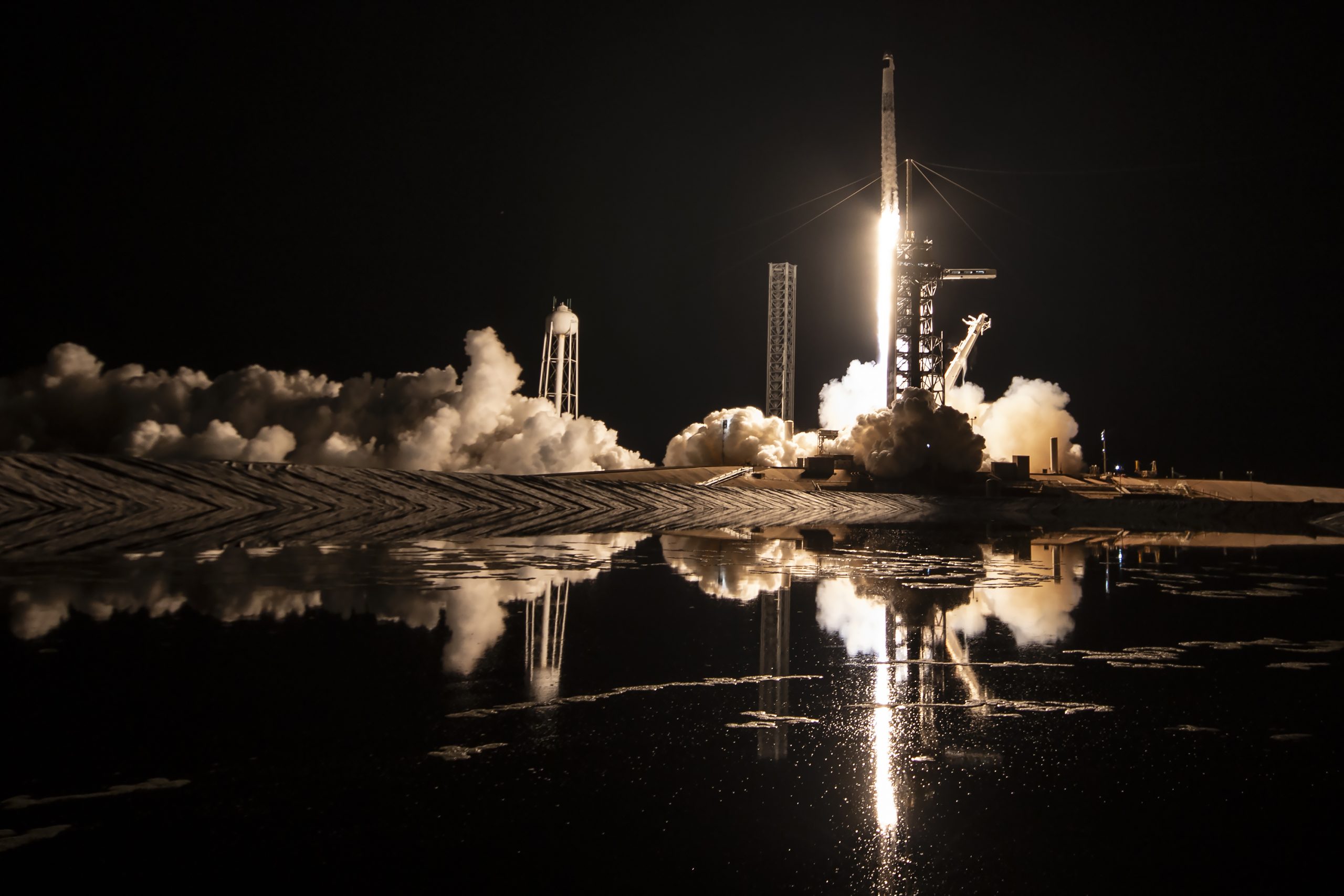
A new report this week suggests that Elon Musk-led rocket company SpaceX is considering an insider share sale that would value the company at $400 billion.
SpaceX is set to launch a primary fundraising round and sell a small number of new shares to investors, according to the report from Bloomberg, which cited people familiar with the matter who asked to remain anonymous due to the information not yet being public. Additionally, the company would sell shares from employees and early investors in a follow-up round, while the primary round would determine the price for the secondary round.
The valuation would represent the largest in history from a privately-owned company in the U.S., surpassing SpaceX’s previous record of $350 billion after a share buyback in December. Rivaling company valuations include ByteDance, the parent company of TikTok, as well as OpenAI.
Bloomberg went on to say that a SpaceX representative didn’t respond to a request for comment at the time of publishing. The publication also notes that the details of such a deal could still change, especially depending on interest from the insider sellers and share buyers.
Axiom’s Ax-4 astronauts arriving to the ISS! https://t.co/WQtTODaYfj
— TESLARATI (@Teslarati) June 26, 2025
READ MORE ON SPACEX: SpaceX to decommission Dragon spacecraft in response to Pres. Trump war of words with Elon Musk
SpaceX’s valuation comes from a few different key factors, especially including the continued expansion of the company’s Starlink satellite internet company. According to the report, Starlink accounts for over half of the company’s yearly revenue. Meanwhile, the company produced its 10 millionth Starlink kit last month.
The company also continues to develop its Starship reusable rocket program, despite the company experiencing an explosion of the rocket on the test stand in Texas last month.
The company has also launched payloads for a number of companies and government contracts. In recent weeks, SpaceX launched Axiom’s Ax-4 mission, sending four astronauts to the International Space Station (ISS) for a 14-day stay to work on around 60 scientific experiments. The mission was launched using the SpaceX Falcon 9 rocket and a new Crew Dragon capsule, while the research is expected to span a range of fields including biology, material and physical sciences, and demonstrations of specialized technology.
News
Tesla Giga Texas continues to pile up with Cybercab castings
Tesla sure is gathering a lot of Cybercab components around the Giga Texas complex.
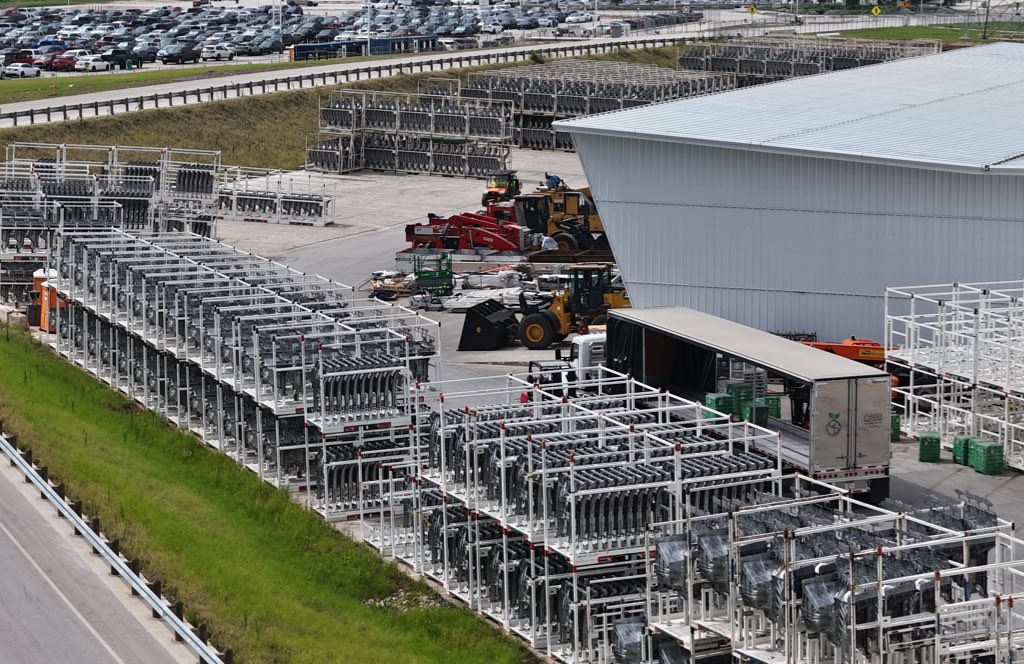
Tesla may be extremely tight-lipped about the new affordable models that it was expected to start producing in the first half of the year, but the company sure is gathering a lot of Cybercab castings around the Giga Texas complex. This is, at least, as per recent images taken of the facility.
Cybercab castings galore
As per longtime drone operator Joe Tegtmeyer, who has been chronicling the developments around the Giga Texas complex for several years now, the electric vehicle maker seems to be gathering hundreds of Cybercab castings around the factory.
Based on observations from industry watchers, the drone operator appears to have captured images of about 180 front and 180 rear Cybercab castings in his recent photos.
Considering the number of castings that were spotted around Giga Texas, it would appear that Tesla may indeed be preparing for the vehicle’s start of trial production sometime later this year. Interestingly enough, large numbers of Cybercab castings have been spotted around the Giga Texas complex in the past few months.
Cybercab production
The Cybercab is expected to be Tesla’s first vehicle that will adopt the company’s “unboxed” process. As per Tesla’s previous update letters, volume production of the Cybercab should start in 2026. So far, prototypes of the Cybercab have been spotted testing around Giga Texas, and expectations are high that the vehicle’s initial trial production should start this year.
With the start of Tesla’s dedicated Robotaxi service around Austin, it might only be a matter of time before the Cybercab starts being tested on public roads as well. When this happens, it would be very difficult to deny the fact that Tesla really does have a safe, working autonomous driving system, and it has the perfect vehicle for it, too.
-

 Elon Musk1 week ago
Elon Musk1 week agoTesla investors will be shocked by Jim Cramer’s latest assessment
-

 News2 weeks ago
News2 weeks agoTesla Robotaxi’s biggest challenge seems to be this one thing
-

 Elon Musk1 day ago
Elon Musk1 day agoElon Musk confirms Grok 4 launch on July 9 with livestream event
-

 News2 weeks ago
News2 weeks agoWatch the first true Tesla Robotaxi intervention by safety monitor
-

 News5 days ago
News5 days agoTesla Model 3 ranks as the safest new car in Europe for 2025, per Euro NCAP tests
-

 Elon Musk2 weeks ago
Elon Musk2 weeks agoA Tesla just delivered itself to a customer autonomously, Elon Musk confirms
-

 Elon Musk2 weeks ago
Elon Musk2 weeks agoElon Musk confirms Tesla Optimus V3 already uses Grok voice AI
-

 Elon Musk2 weeks ago
Elon Musk2 weeks agoxAI welcomes Memphis pollution results, environmental groups push back

